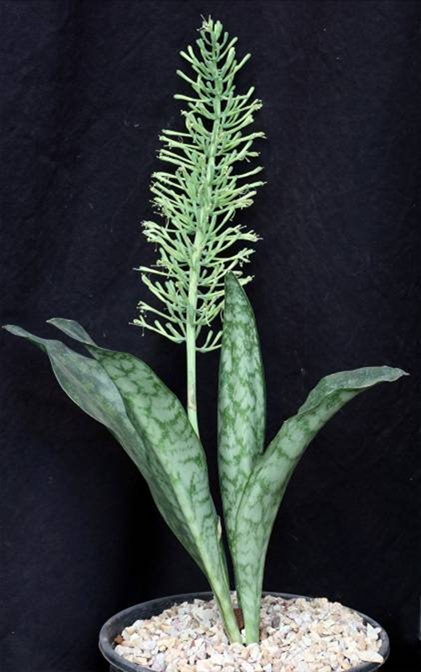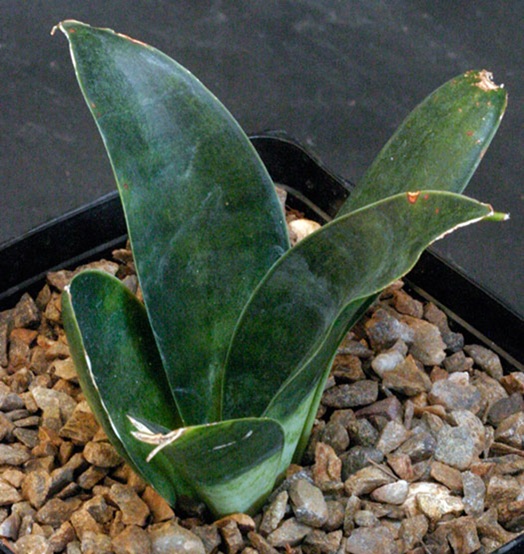| Protologue: |
Bulletin of the Museum of Natural History (Paris) 9: 173 (1903). |
| Etymology: |
This species is named for the cross banding of the basal sheaths around the leaves. |
| Subgenus: |
Sansevieria |
| Group: |
Sansevieria trifasciata |
| Distribution: |
Democratic Republic of the Congo. |
| Brief Description: |
This short broad-leaf acaulescent and rhizomatous species has 2 - 5 recurved-spreading leaves that are smooth, lanceolate, and 38-84 cm long and 3.8-11.5 cm across. The leaves are narrowed from about the middle downwards into a channelled petiole, and the tip is soft and green. The upper surface is light green interrupted into patches by irregular zigzagging dark-green bands; the lower surface is lighter green with irregular narrow dark green bands. The margin is green, becoming reddish or whitish with age. The inflorescence was not described in the protologue, however we have measured it to be about 50 cm long with 2-3 flowers per cluster. |
| Similar Species: |
Sansevieria fasciata is one of those smaller broad-leaf species that can resemble just about anything else at that size. There are forms that have dark green leaves without mottling or banding, and there are vivid patterned leaves as depicted for the typical species. The closest species to this is Sansevieria grandis, which has approximately the same size plants but with more ovate, or paddle-shaped, leaves. Clearly it is related to Sansevieria trifasciata, although that species has narrower and longer leaves. |
| |
| |

Sansevieria fasciata flowering in cultivation.
|
| |

Sansevieria fasciata, a form with plain dark green leaves.
|

